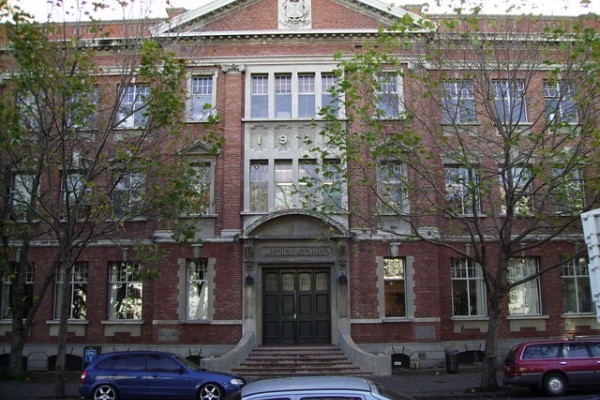Student representatives are fighting a proposal to cap the number of Māori and Pasifika entrants to med school.
Radio New Zealand have reported that the proposal includes capping Māori student entrants to Professional Health Sciences programmes (such as Medicine and Dentistry) at 56. Professor Paul Brunton, Pro Vice Chancellor of the Division of Health Sciences, would not confirm to Critic that this number is accurate, and said “the matter is still under consideration and no decisions have been made at this point”.
The categories of priority pathways which may be capped include Māori, Pasifika, rural, low socio-economic and refugee students. Isaac Smiler, the President of Toko, the Māori medical students’ association, said there had been no Māori consultation on this document.
In a joint statement made by OUSA, Te Roopū Māori and the Pasific Islands Students’ Association, student reps said that they were made aware of the proposed cap by university staff outside official channels. Although they were able to meet with the Dean of Medicine the following week, since then the student reps say the University “has made no attempt to actively engage or consult with [us]”.
“Since receiving clarification on the proposal from that meeting, we hold considerable concerns about what is being proposed and what this means for students. We oppose the suggested changes to the Mirror on Society Policy [the current policy of preferential entry] and believe that caps on entry sub categories should be determined with the aim of creating a health workforce that reflects the population it serves, rather than basing them on the demographics of high school aged students. [It should] reflect the current proportion of the health workforce, not identified demographics. We believe the consultation period should be extended and should involve student and minority leader voices, and that whilst this consultation happens no interim changes to the admission process should be made.”
Brunton said that the discussion document which contained the proposal was developed “by leaders within the Otago Medical School, Division of Health Sciences and University” and no changes have yet been made, nor would they affect 2021’s professional programme intake.
However, the Medical Admissions Committee was reportedly given only 24 hours to review this discussion document, which was then extended to a week. Anu Kaw, the President of the Medical Students’ Association (OUMSA), told Critic “we found out near the end of that week. That's when we put our letters in, firstly about the process and lack of consultation, and also about what the ramifications were down the line.”
“We just wanna know what the rush is. What's driving this? Because we don't know. The fact that it's been acted with some urgency is concerning, but the fact that we don't know what that urgency is is even more concerning.”
The Dean of the Otago Medical School, Professor Rathan Subramaniam, said that should a formal proposal for change be made, “ample opportunities for consultation will be provided”.
However, Isaac is concerned that this consultation will not happen, as the process so far “has avoided the Māori and Pacific voices on this matter. And for something that has such ramifications for Māori/Pacific people, you'd think that those voices would have been consulted.”
“There are people in place [in the University, whose job it is] is to represent the Māori voice. Those people need to be included.”
Mirror on Society and making the health profession equitable:
In 2010, only approximately 10% of the entrants to Otago’s med school were Māori or Pasifika. Brunton said that this number grew to approximately 31% for 2020’s intake. This change is credited to the Uni’s Mirror on Society Policy, which was introduced to the Professional Health Science Programmes in 2012.
This policy aims to train a health workforce that “is representative of the demographic makeup of that population, and thus best able to meet society’s needs,” according to Subramaniam.
Brunton said that there is a “gross under-representation of some key populations in NZ’s health workforce”. For example, Māori and Pasifika make up 5.2% of the medical workforce but make up 25.5% of the NZ population, according to the 2018 census.
Currently, the government funds 282 domestic places for second year medicine (the first year of the medical degree programme). 70% of those places go to first year applicants, 20% to students who have already completed a university degree, and 10% to people who have the “equivalent of a NZ University degree of health professional experience,” said Brunton.
Subramaniam said that there is “no suggestion of any fundamental change to the overall principles” of the Mirror on Society Policy. However, following “record numbers of Māori and Pasifika students entering the Professional programmes,” the Uni wants to consider updating the regulations of this policy “to better reflect the policy and associated process requirements” and enhance transparency of how this works.
Student reps, however, believe that it is important that Māori, Pasifika and student voices are heard now. “We’re open to the discussion [of caps],” said Isaac. “But, because this discussion isn’t taking place, that’s where we feel left out”.
Renee, the VP of the Pacific Island Health Professional Students' Association, added her concern that this would add “unnecessary pressure in a place we’re not really represented in. The University is supposed to be a place that we feel welcomed and comfortable in and these caps are saying to these students that they’re limiting their aspirations.”
“It's imperative to have the student voice. It affects us directly because it affects the workforce that we are joining,” Anu said.
No first years have got in touch with them. “I think there is some awareness … but from our knowledge, we don’t actually [know]”.



